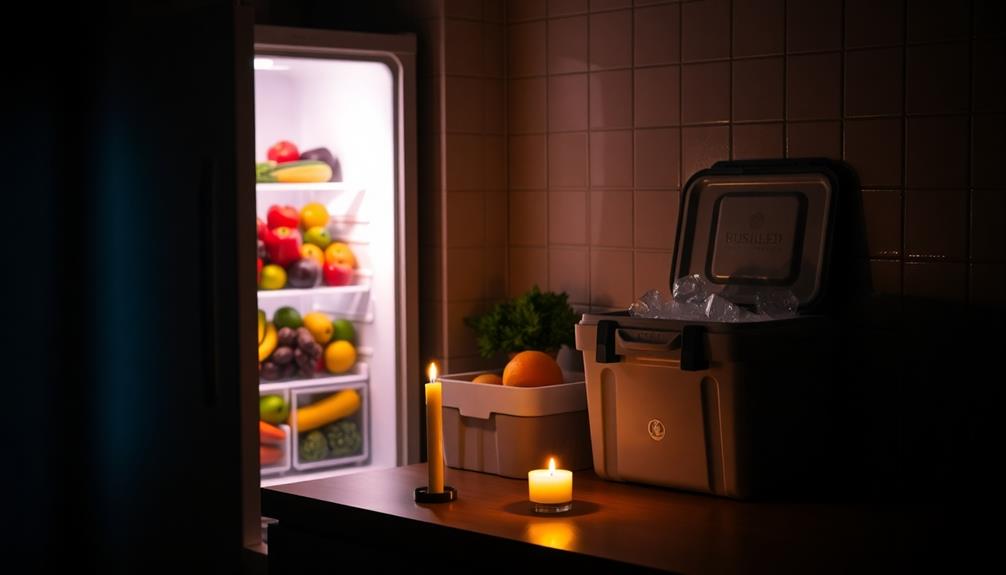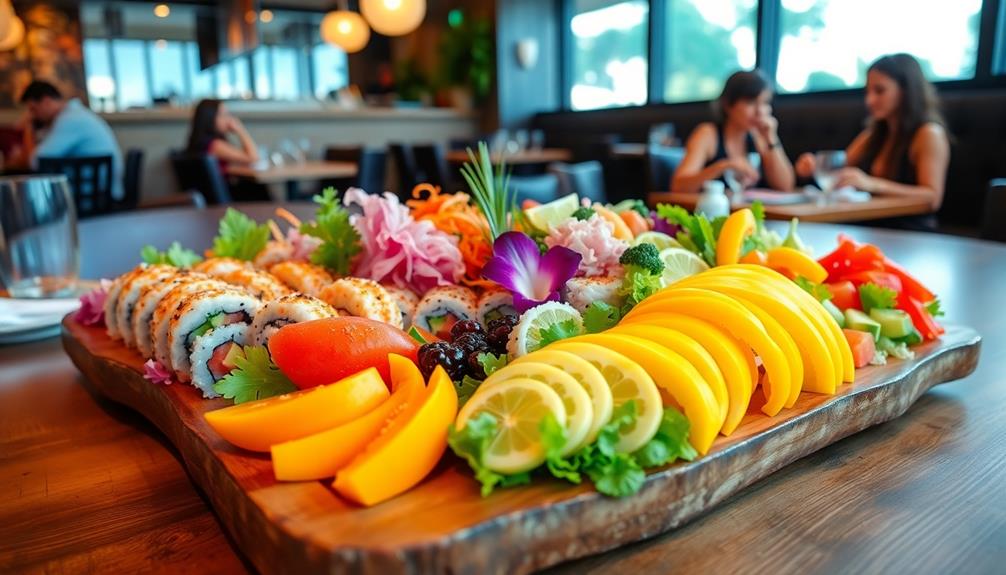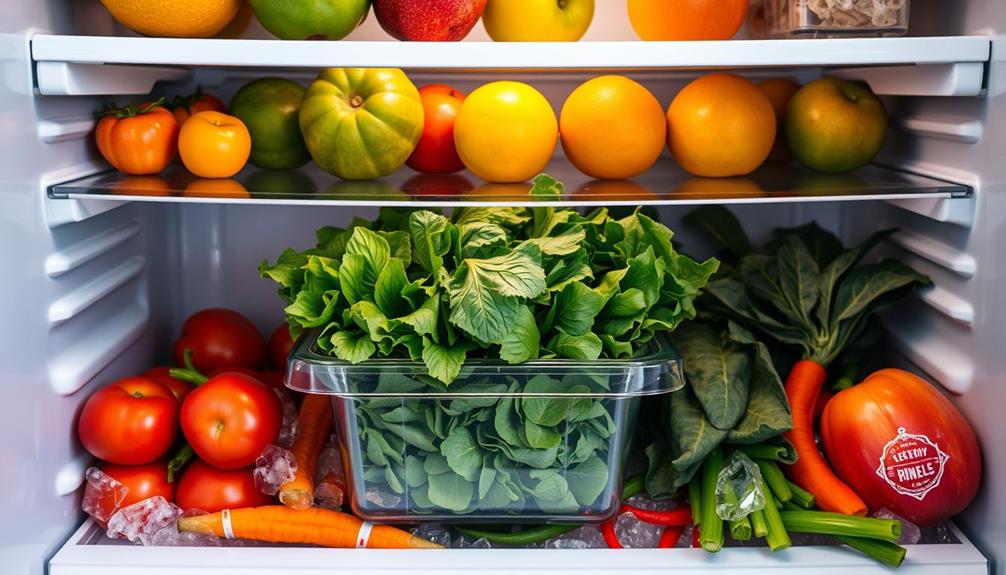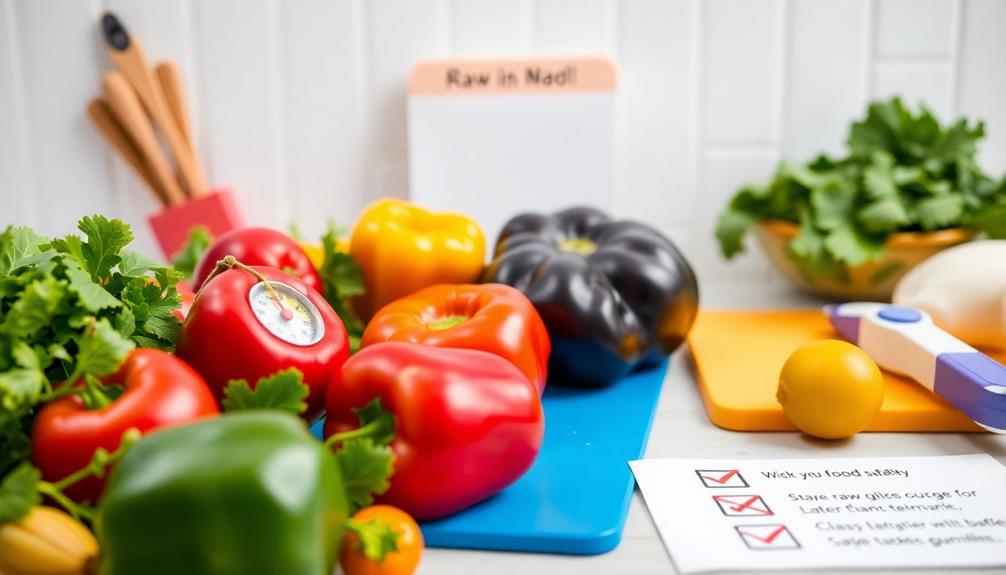During power outages, the safety of your raw food can be at risk. Keep refrigerator doors closed to maintain temperatures below 40°F for 4-6 hours. If food rises above that for over 2 hours, it's best to discard it. A full freezer can keep food safe for about 48 hours. Use appliance thermometers to regularly check temperatures. For cooking, consider using outdoor grills or camp stoves, but avoid indoor appliances due to carbon monoxide risks. Staying informed can help you better prepare for these situations, and you might find even more tips to safeguard your food safety.
Key Takeaways
- Discard raw foods that have been above 40°F for more than 2 hours to prevent foodborne illness.
- Keep refrigerator doors closed to maintain safe temperatures for 4-6 hours during a power outage.
- Full freezers can keep raw food safe for approximately 48 hours; half-full lasts about 24 hours.
- Use appliance thermometers to monitor food temperatures and ensure safety during outages.
- Refreezing raw food is acceptable if it has ice crystals or has remained at 40°F or below.
Understanding Power Outage Risks
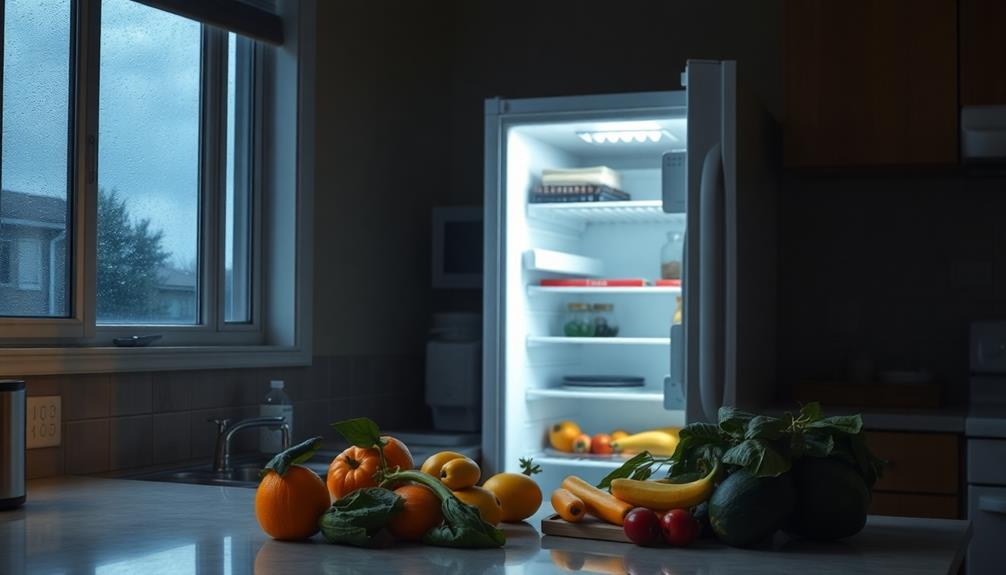
Power outages can happen unexpectedly, and understanding the risks they pose to your food safety is crucial. When the power goes out, your refrigerator can keep food at safe temperatures for about 4-6 hours, as long as you keep the doors closed. However, any food stored above 40°F for more than 2 hours should be discarded to prevent foodborne illness. This is especially critical for raw meats and dairy products, which can spoil quickly.
If you have a full freezer, it can keep food safe for about 48 hours under the same conditions. To effectively monitor the temperature during a power outage, it's wise to use an appliance thermometer. This tool helps you keep track of the internal temperature of your food, ensuring you know when it's time to take action.
Understanding the causes and duration of power outages is essential for effective planning. By staying informed and prepared, you can minimize the risk of spoilage and protect your family from foodborne illnesses.
Always remember that a little knowledge and preparedness can go a long way in keeping food safe during uncertain times.
Essential Food Storage Practices
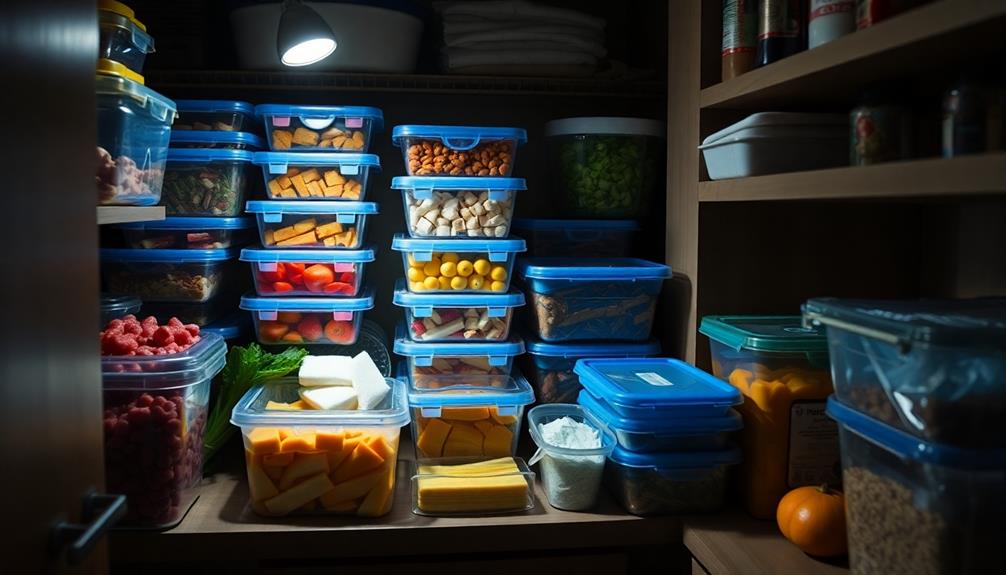
Effective food storage practices are essential during power outages to guarantee your perishables remain safe. Keep your refrigerator doors closed as much as possible; this helps keep the internal temperature below 40°F for up to 4-6 hours.
If your freezer is full, it can maintain a safe temperature for about 48 hours, while a half-full freezer may only last 24 hours.
If food thaws but still has ice crystals or is at 40°F or below, it's safe to refreeze, though its quality might decline. Always use an appliance thermometer to check the temperatures of your fridge and freezer, ensuring they stay within safe limits.
Be vigilant: discard any perishable food that's been above 40°F for more than 2 hours. This includes raw meats, dairy products, and other potentially hazardous items.
Safe Cooking Methods
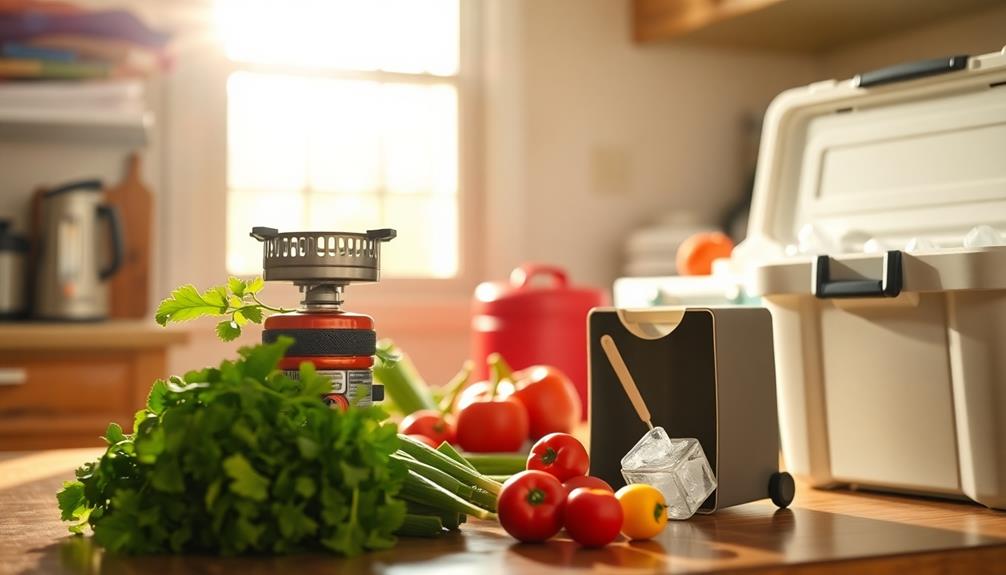
When the lights go out, you still need to secure your raw foods are cooked safely. Here are some safe cooking methods you can rely on during a power outage:
- Use outdoor grills or camp stoves, avoiding indoor appliances to prevent carbon monoxide poisoning.
- Set up charcoal or gas grills in well-ventilated areas to avoid hazardous fume buildup.
- Cook over an open fire in a fireplace if the chimney is sound and maintained.
- Power small electrical appliances with generators, following safety guidelines.
These methods guarantee food safety while minimizing risks. The key is to maintain the right environment; cold air can affect your cooking methods, so always check your setup.
Remember, food safety is paramount. Regardless of how you cook, make sure raw foods reach a safe internal temperature to kill harmful bacteria. Using a food thermometer is vital for this step.
Monitoring Food Temperature
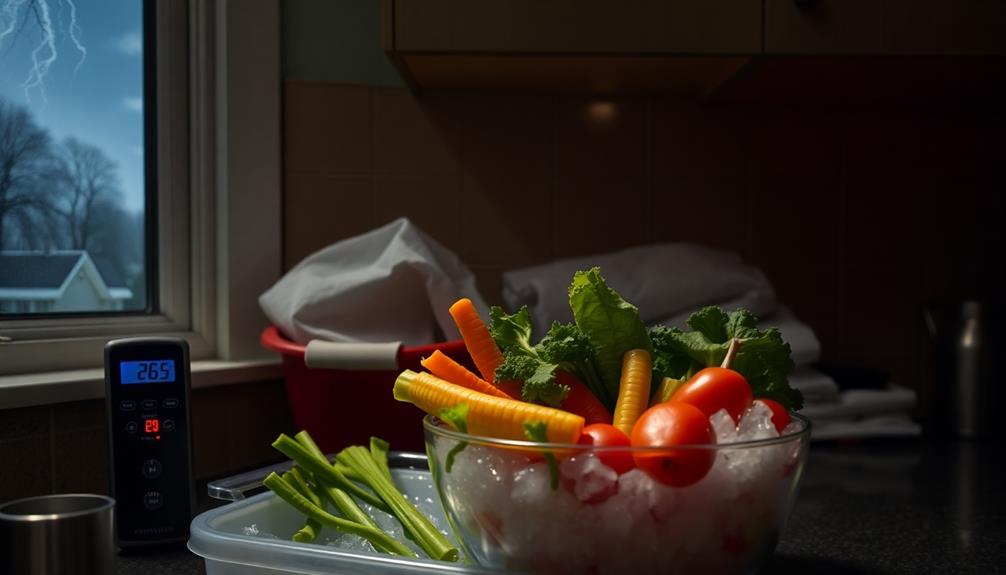
How do you guarantee your food stays safe during a power outage? First, make certain you use appliance thermometers to regularly check your refrigerator and freezer temperatures. Keep your refrigerator below 40°F to avoid foodborne illnesses.
During an outage, keep the refrigerator doors closed as much as possible; this helps maintain a safe temperature for 4-6 hours without power.
If you have a full freezer, it can stay at a safe temperature for up to 48 hours, while a half-full freezer may only last about 24 hours.
If the power comes back on and your thermometer reads above 40°F for more than 2 hours, it's essential to discard perishable items like meat, poultry, and dairy to prevent foodborne illnesses.
After thawing, always check for ice crystals in your foods. If you find them, you can safely refreeze the food.
However, if there are no ice crystals, you should cook the food before eating it.
Emergency Preparedness Tips
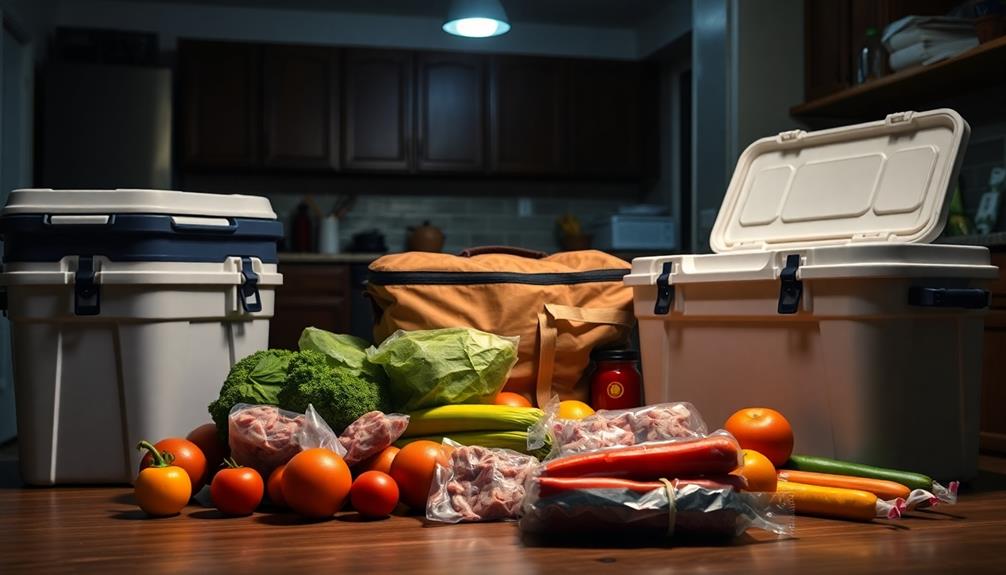
Being prepared for power outages can make a significant difference in keeping your food safe. Here are some essential tips to help you stay ahead of potential issues:
- Keep an appliance thermometer in your refrigerator and freezer.
- Freeze water in bags or use frozen packs to maintain cold temperatures.
- Store perishable foods in insulated coolers with ice packs for outages over six hours.
- Familiarize yourself with your insurance policy regarding food loss.
During a power outage, monitor your fridge to confirm it stays below 40°F. If the power's out for more than two hours, keep the door closed to maintain the cold temperature.
For your freezer, it should remain at 0°F or below. If you anticipate a longer outage, consider transferring perishables to coolers with ice packs.
Having alternative cooking methods ready, like charcoal or gas grills, is also crucial for preparing meals.
Frequently Asked Questions
Are Pickles Safe After a Power Outage?
Yes, pickles can be safe after a power outage if they've stayed below 40°F. Check for spoilage signs like off smells or mold; if you see any, it's best to throw them away.
What to Do if Power Goes Out While Cooking Meat?
If the power goes out while you're cooking meat, check the internal temperature immediately. If it's above 40°F for over two hours, it's best to discard it to avoid foodborne illness. Stay safe!
How Long Will Milk Last in the Fridge Without Power?
Milk can stay safe for up to four hours in the fridge without power if you keep the door closed. If it's above 40°F for more than two hours, you need to discard it.
How Do You Know if Meat Is Bad After a Power Outage?
To tell if meat's bad, check for off smells, slimy textures, or discoloration. Use an appliance thermometer—if it's above 40°F, discard it. When in doubt, it's safer to throw it away.
Conclusion
In the face of a power outage, you can take control of your food safety and protect your loved ones. Imagine the relief of sharing a meal, knowing you've kept everything safe and sound. By following these guidelines and being prepared, you're not just safeguarding food; you're preserving moments together. Remember, it only takes a little planning to turn a potential crisis into a shared experience, transforming uncertainty into the warmth of family and friendship.

